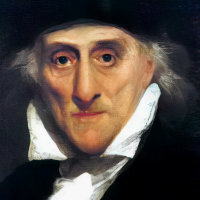| Handout (flat) Handout (folded) Class Script | Return to Index |
VIDEO LINKS
Most of my clips were taken from the 2006 production by Nicholas Hytner at Glyndebourne. This is available on DVD for about $39 new or $4 used. YouTube has only a bunch of short clips, though many of these come from scenes we watched in class; I have put all these in a section together.
There are actually many full productions of the opera on YouTube. I list only those with titles in English, with brief notes on each, but there are a lot more out there. Even though we only have the first act, I include the one from Drottningholm, Sweden, because it is a chamber production in the kind of theater Mozart himself would have known. The best traditional production is probably the one from Vienna, but it is marred by obtrusive bilingual titles (incidentally the Ferrando, Michael Schade, is a former student of mine).
The section after that consists of a bunch of trailers (all a minute or less), my compilation of different ways of ending the opera (now including the very end of an earlier production by Sven-Eric Bechtolf that is more radical than anything else I showed), and some interesting alternative versions of scenes watched in class. Two of these come from Phelim McDermott's current production for the Metropolitan Opera, set in Coney Island, and featuring a troupe of circus artistes. Good though the perfomances are, I find it grossly over-produced, lacking the essential trust in the music to carry the story on its own. Also over-produced, but a lot more interestingly so, is the 2018 production by Christophe Honoré at Aix-en-Provence. He sets the opera in some French Foreign Legion post in Africa, peopled with many more performers than the central six. so that the atmosphere is already sexually and racially charged from the start. The men return in blackface, and Guglielmo's seduction of Dorabella is not merely a matter of showing that she is attracted to him, but basically to any man, regardless of race. I did not show it because it is potentially offensive on so many fronts—but by the same token, it is the most original approach to the opera that I know. German titles only, unfortunately.
Listings are chronological within sections. *Asterisks indicate clips that were shown in class. rb.
| MAIN PRODUCTION SHOWN IN CLASS | |||
| Glyndebourne 2006 |
* Sisters' opening duet, second half
(production by Nicholas Hytner) * Farewell quintet * Prayer trio * Guglielmo's first aria * Doctor scene * Sisters' Act II duet (in which they chose partners) * Fiordiligi's Act II aria (Miah Persson, complete) * Fiordiligi/Ferrando duet |
||
| PRODUCTIONS WITH ENGLISH TITLES | |||
| Drottningholm 1984 | * Act I only (chamber production in C18 theater) | ||
| Paris 1992 | * Complete (clean period production, good acting) | ||
| Salzburg 2006 |
* Act I
(almost abstract sets) * Act II (continuation of the above) |
||
| Zurich 2009 | * Complete (clean period production) | ||
| Salzburg 2009 | * Complete (modern-dress production by Claus Guth) | ||
| OTHER RELEVANT CLIPS | |||
| Trailers |
* Glyndebourne 2006
(Nicholas Hytner production shown in class) * Salzburg 2014 (Sven-Eric Bechtolf) * Royal Opera House 2016 (Jan Philip Gloger) * Seattle 2018 (revival of Jonathan Miller production) * Metropolitan Opera 2018 (Phelim McDermott; see note above) * Salzburg 2021 (Christoph Loy) * Irish National Opera 2023 * Vienna Volksoper 2024 (Maurice Lenhard; tennis-match trailer) |
||
| Overture | * Metropolitan Opera (see note above) | ||
| Sisters' opening duet |
* Salzburg 2009
(Miah Persson, Isobel Leonard) * Aix-en-Provence 2018 (see note above; German titles) |
||
| Prayer trio |
* Royal Opera House
(Gloger production, set in a train station!) * Aix-en-Provence 2018 (entire scene; see note above) |
||
| Sextet | * Aix-en-Provence 2018 (extended scene; see note above) | ||
| Doctor scene | * Metropolitan Opera 2018 (see note above) | ||
| Guglielmo/Dorabella duet |
* Paris 1992
(strange production, great acting!) * Royal Opera House 2016 (as shown in class) * Aix-en-Provence 2018 (see note above; German titles) * Salzburg 2021 (ending of this was shown in class) |
||
| Ferrando/Fiordiligi duet | * Paris 1992 | ||
| Ending of the opera |
* My compilation
(shown in class) * — additional version (Sven-Eric Bechtolf, Zurich) |
||

















